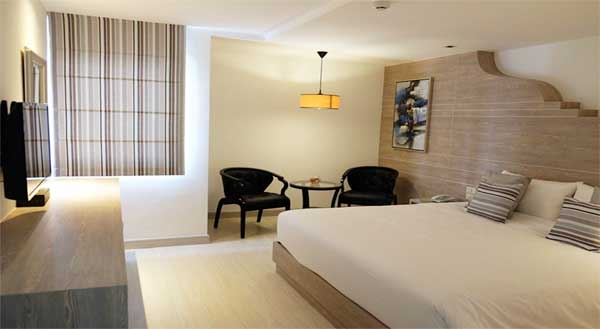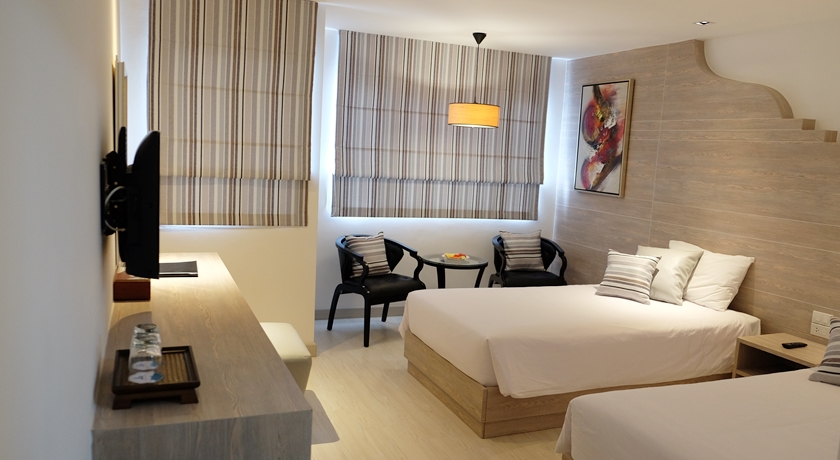
NEARBY ATTRACTION
Many tourist attractions, within a walking distance or a short drive from the residence, are around to explore :
-
The Temple of The Emerald Buddha, Wat Pra Kaew
+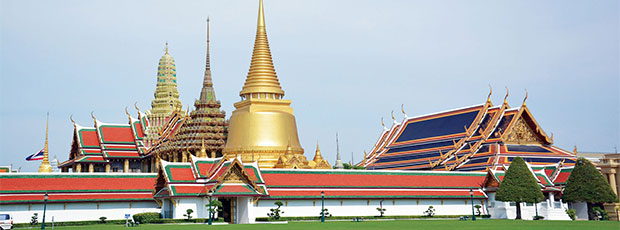
Wat Phrasrirattana Sasadaram (Wat Phra Kaeo), or the Temple of the Emerald Buddha, situated within the Grand Palace, near Sanam Luang, is a sacred symbol of the Rattanakosin, or Bangkok, Dyansty and the most important temple in realm. It was built by King Rama I, the founder of the Chakri Dynasty, at the same time as the Grand Palace in 1782, when he established Bangkok as his capital, in order to serve as the palace chapel, in which traditional royal ceremonies would be conducted. It thus has a sanctuary for the performance of Buddhist rites, but no residences for monks.
ATTRACTION MAP:
-
The Grand Palace
+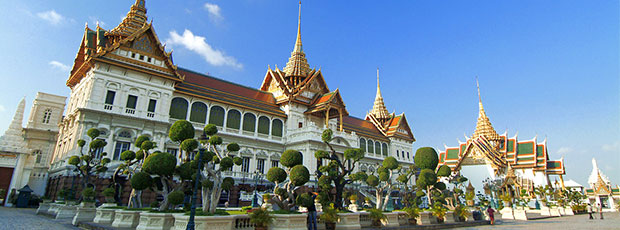
Probably the most visited and remembered landmark of Thailand, The Grand Palace in Bangkok is where every visitor must pay a visit at least once in their lifetime. The construction of the Grand Palace began in 1782 during the reign of King Rama I, the founder of Chakri Dynasty, to become a royal residence, and it has been the utmost architectural symbol of Thailand ever since. The Grand Palace served as a significant royal residence until 1925 and is now used for ceremonial purposes only.
The Grand Palace is divided into three main zones: The Outer Court, home to royal offices, public buildings and the Temple of Emerald Buddha; the Middle Court, which is where the most important residential and state buildings are; and the Inner Court, which is exclusively reserved for the king, his queen and his consorts.
ATTRACTION MAP:
-
Wat Pho, The Declining Buddha and traditional Thai massage
+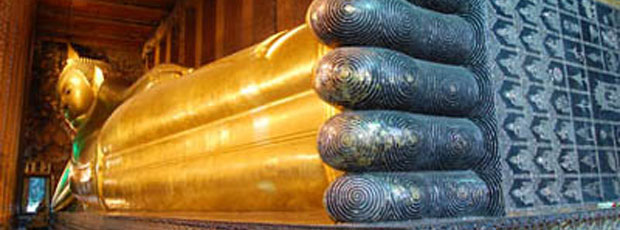
Wat Phra Chetuphon Wimonmangkalaram or Wat Pho, as it's commonly known, was built in the 16th century and regarded as the royal temple of the reign of King Rama I, is famous for two things: (1) the 46-meter-long Reclining Buddha built in 1832 featuring the feet beautifully inlaid with mother-of-pearls and (2) the Thai massage.
Wat Pho is also regarded as the country’s first public university as when King Rama III ordered a restoration of the temple, he demanded a revision of lost sciences, segmented into eight categories and engraved them onto several stone inscriptions (later been registered the UNESCO Memory of the World since 2008) so people were free to read and learn—and Thai massage was one of eight the categories. After wandering around wall paintings, you can stop by at the massage pavilion to try traditional Thai massage using ancient techniques to release muscle tensions. A selection of Thai massage courses are also available for those who are interested.
ATTRACTION MAP:
-
Khaosan road – Bangkok’s most fascinating night place
+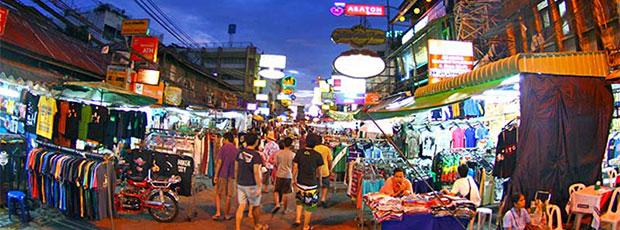
Khao San Road - The popular book 'The Beach' famously described Khao San Road as "the centre of the backpacking universe". Judging by the truth-seeking travellers who converge here to shop, exchange tales and prepare for their next stint on the backpacker trail, it's a phrase that sums it up pretty much perfectly.
Packed into a 1km long strip are countless budget guesthouses and mid-range hotels, internet cafes, swanky bars and clubs, restaurants, massage parlours, travel agents, bookshops, market stalls, tattoo shops and much, much more. So much in fact, that the people, peddlers and party spirit have spilled over into nearby Soi Rambuttri. With its carefree, anything-goes vibe, it's quite unlike anywhere else in Bangkok, and so infectious is its atmosphere it's also popular with locals, especially young hipsters and art students.
ATTRACTION MAP:
-
National Museum
+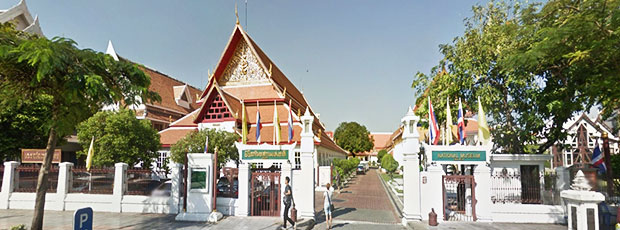
In the former grounds of the 18th Century Wang Na Palace, The Bangkok National Museum houses the largest collection of Thai art and artifacts in the country. It's definitely worth a visit, especially if visiting nearby Wat Phra Kaew or the Grand Palace.
Opened by King Rama V to exhibit the antiques and gifts bestowed to him by his father, it once held a reputation for being an ill-organised gathering of dusty relics. That has now changed, with exhibits now arranged into three areas consistent with Thai history, and good English-language descriptions available.
ATTRACTION MAP:
-
Vimanmek Mansion – the biggest golden teak mansion of King Rama V
+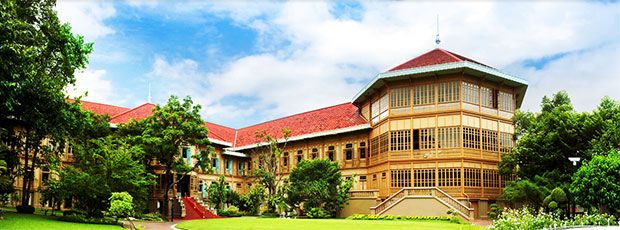
Billed as the world's largest teakwood building, Vimanmek Mansion was built as a royal residence in the first few years of the twentieth century. It was only used for a few years before it fell into disuse and was practically forgotten until the early eighties. It was rediscovered by Her Majesty the Queen and turned into museum reflecting the Thai heritage from the dramatic reign of King Rama V.
From a single restored building in the 1980s, the Vimanmek Mansion Museum has grown to include more than a dozen restored structures of the old Dusit Palace displaying everything from ancient artifacts of Thailand's pre-history to contemporary photographs donated by His Majesty the King. It has now become a large complex of museums where the buildings themselves form part of the "collection" on display.
ATTRACTION MAP:
-
Ananta Samakhom Throne Hall
+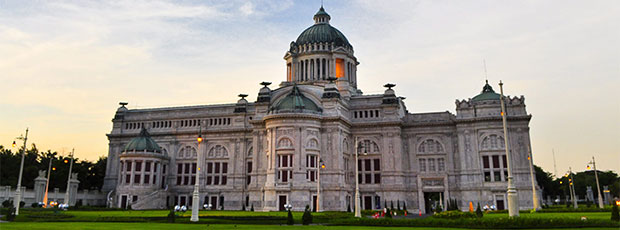
The centerpiece of Bangkok's own Champs Elysees, this impressive two-storey white marble palace sits at the end of Dusit's long, wide Royal Plaza, a leafy ceremonial boulevard that's often the focus of regal pomp and ceremony during royal celebrations.
Ordered by King Rama V in 1907 and finished in the reign of King Rama VI, its neo-classical Renaissance architecture - particularly its central dome - dominate the scene just as Italian architects Mario Tamango and Annibale Rigotti intended. Following the 1932 coup it housed the first Thai parliament, but today its ornate interiors serve as a prestigious locale in which to court visiting dignitaries, hold state council meetings and royal occasions.
ATTRACTION MAP:
-
China Town
+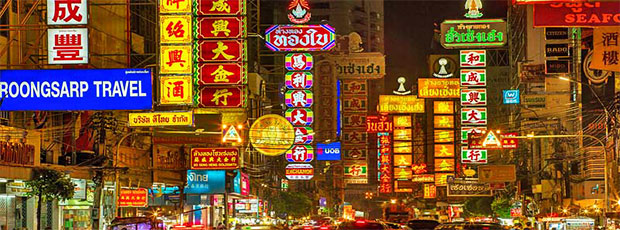
Bangkok’s Chinatown is a popular tourist attraction and a food haven for new generation gourmands who flock here after sunset to explore the vibrant street-side cuisine. At day time, it’s no less busy, as hordes of shoppers descend upon this 1-km strip and adjacent Charoenkrung Road to get a day’s worth of staple, trade gold, or pay a visit to one of the Chinese temples.
Packed with market stalls, street-side restaurants and a dense concentration of gold shops, Chinatown is an experience not to miss. The energy that oozes from its endless rows of wooden shop-houses is plain contagious – it will keep you wanting to come back for more. Plan your visit during major festivals, like Chinese New Year, and you will see Bangkok Chinatown at its best.
ATTRACTION MAP:
-
Golden mountain
+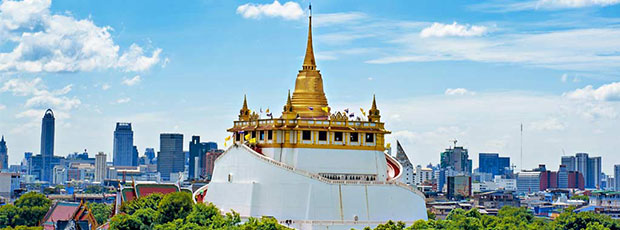
Wat Saket, popularly known as the Golden Mount or ‘Phu Khao Thong’, is a low hill crowned with a gleaming gold chedi. Within, the 58-metre chedi houses a Buddha relic and welcomes worshippers all year round. The temple also hosts an annual temple fair in November, which lasts a week during Loy Krathong.
The temple grounds feature mature trees and typical Buddhist structures such as the main chapel, ordination hall and library. Its origins can be traced back to the Ayutthaya period (1350- 1767 AD) and it underwent major renovations during King Rama I’s reign (1782-1809).
ATTRACTION MAP:
-
Rattanakosin Exhibition Hall
+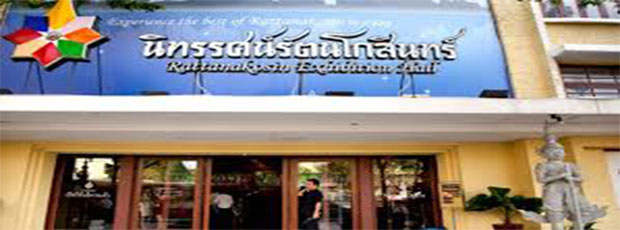
One of Bangkok's newest museums, opened in 2010, the Rattanakosin Exhibition Hall recounts the rich history of Bangkok's royal city, referred to locally as Rattanakosin Island. This new generation museum is targeted mostly at Thais, and uses an impressive array of technological tricks to lure in the locals, who have something of an extreme disdain for museums. Although it aims to attract Thais, the museum will still be of interest to western visitors.
ATTRACTION MAP:
-
Democracy Monument
+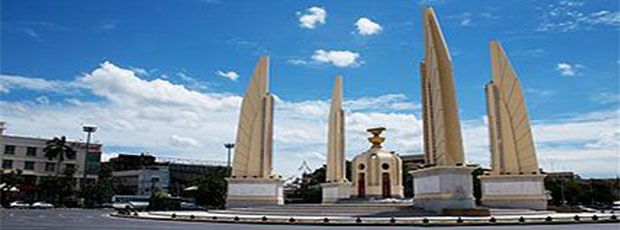
The Democracy Monument was started in 1939 to commemorate the 1932 revolution that ended the absolute monarchy and introduced Siam's first constitution. The design of the monument is full of symbolism. For example, the four wings are each 24 meters high, signifying the 24th of June date the new constitution was signed. The location of the monument, between the old Grand Palace and the Dusit Palace, is also significant. A copy of the original constitution is held in central pedestal.
The monument has some interesting details in its bas relief panels on the bases of the wings, but braving the traffic whizzing around the site can be a bit daunting. There are plans afloat to turn Rajadamnoen Road into Bangkok's "Champs Elysees" which include underground tunnels to make access to the monument easier and safer.
ATTRACTION MAP:
-
Ratchadamnoen Contemporary Art Center
+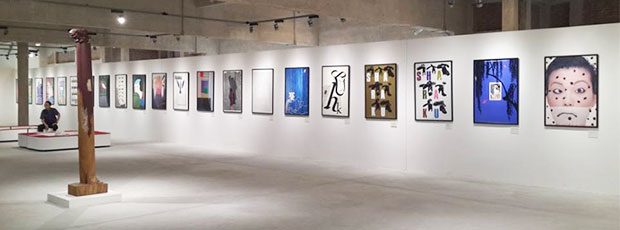
Ratchadamnoen Contemporary Art Center (RCAC) is an art gallery showcasing Thailand's contemporary artists.
A learning center and Thailand’s new contemporary art and culture centre at a four-storey building on Ratchadamnoen Klang Avenue. Not only will the art gallery be a centre of cultural learning, but will display artwork by Thai and international artists.
ATTRACTION MAP:
special offers

